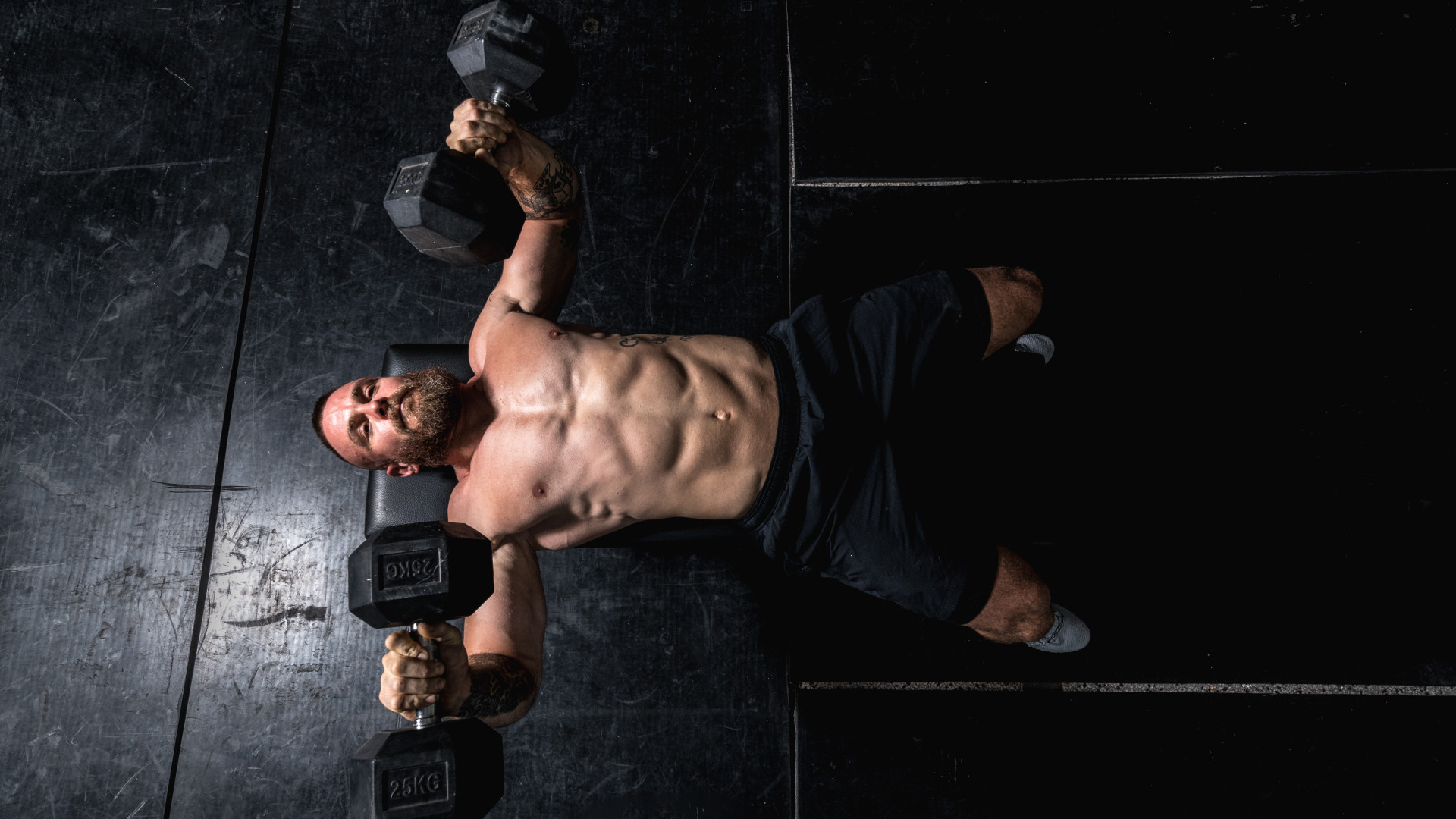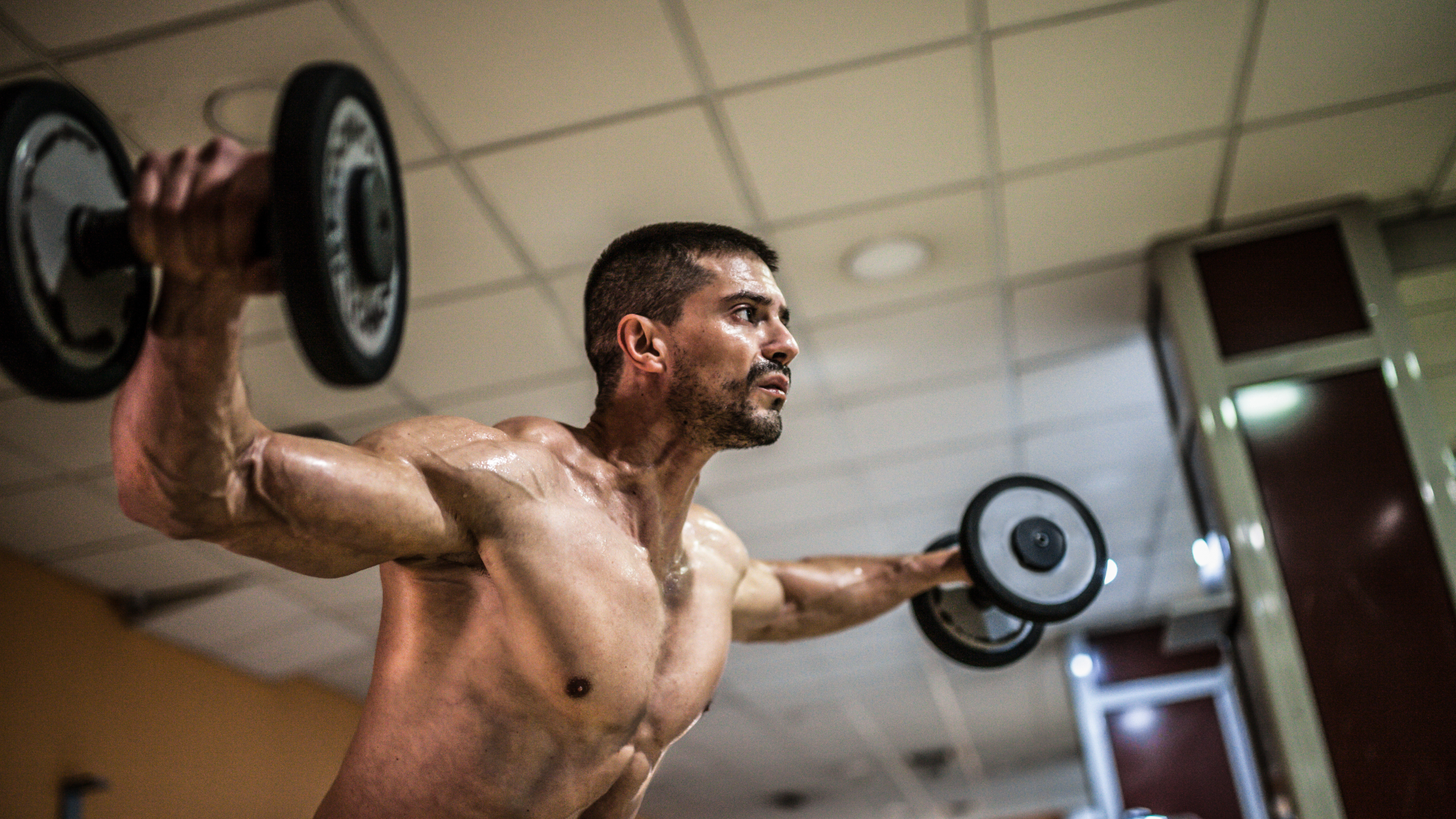Why the 6-12-25 Protocol is your secret weapon for fast muscle gains
Think you've tried everything to get your muscles to grow? Think again


Charles Poliquin, legendary for his training methods and unmistakably powerful arms, wasn’t called the 'King of Biceps' for nothing. Known for pushing the boundaries of muscle growth, Poliquin developed the 6-12-25 Protocol – a workout approach that bodybuilders and strength enthusiasts alike have hailed for its ability to deliver rapid results.
This intense protocol isn’t just about building bigger muscles; it’s a transformative approach that boosts body composition, maximises hypertrophy and enhances both strength and endurance. With each workout, you’ll experience an unmatched pump and accelerated muscle growth that traditional routines can’t quite replicate.
What’s more, this method can halve your usual gym time without sacrificing the intensity or volume crucial for gains. By performing all exercises in a row with minimal rest, you’ll supercharge efficiency, making every minute count.
Ready to uncover the power of the 6-12-25 Protocol? Here’s how to get started.
What is the 6-12-25 Protocol?
The 6-12-25 Protocol is a powerhouse training protocol that harnesses the intensity of giant sets to pack high-volume work into a short period. By targeting one muscle group or body part per set, this method takes you through three different exercises with minimal rest, hitting 6, 12, and 25 reps in quick succession. With just three to five rounds per session and a solid three-minute recovery between rounds, it’s a quick and effective way to achieve serious muscle fatigue.
How to do the 6-12-25 Protocol?
To get started, decide on the muscle group you want to target. Upper body, lower body, push, pull, chest, or back – the choice is yours. Begin with a heavy, compound exercise for 6 reps, followed by a brief 10-second rest.
Then, move on to a secondary exercise for 12 reps, again taking only a quick 10-second break. Finally, wrap up with 25 reps of a bodyweight or simpler move that takes your muscles to total exhaustion, closing the set with intensity.
Get all the latest news, reviews, deals and buying guides on gorgeous tech, home and active products from the T3 experts
This approach lets you start with fewer reps and a challenging load, progressing to a less demanding isolation exercise at 12 reps, and finishing strong with 25 reps of a high-volume, bodyweight movement. Each round leaves the muscle fully taxed, maximizing growth and endurance in every set.
Why is the 6-12-25 Protocol so effective?

Think about it, “by performing exercises with different rep ranges, you effectively target a variety of muscle fibres whilst keeping your muscles under tension for a prolonged period. This combination taxes both your strength and endurance, making it a high-intensity approach,” says Sergii Putsov, Head of Sport Science at Torokhtiy Weightlifting.
Let’s take the lower-rep range - your first six reps; this “targets heavier weights, allowing you to progressively overload your muscles and build strength. This phase mainly focuses on recruiting fast-twitch muscle fibres, crucial for explosive power and strength gains,” explains Sergii.
The 12-rep set then focuses on muscle growth and, therefore, muscle hypertrophy. “This rep range increases time under tension, stimulating muscle protein synthesis which leads to increased muscle size over time, particularly in targeted areas - and the 25-rep set with lighter weights emphasizes endurance,” adds Sergii.
“The primary objective is to allow your muscles to work for a longer duration without fatigue. This phase helps build stamina, enhances metabolic conditioning and improves muscle definition.”
In summary, the 6-12-25 combination “is the ideal combo for maximum muscle fibre recruitment and metabolic stress, which are key drivers for muscle growth and improved conditioning,” says Sergii. It’s not only simple, but it’s effective. Don’t be fooled, though - it’s not easy. “Fatigue will kick in pretty quickly during your session because of progressive load, accumulated fatigue, and minimal rest between sets,” Sergii adds.
Workout plan
Remember to perform a few warm-up sets before starting with your main working weights. To prime your muscles and nervous system without approaching fatigue, only complete 6-8 reps on each warm-up set.

- Day 1: Chest and Triceps
- 1a. Bench Press — 3 sets of 6 reps (heavy)
- 1b. Shoulder Press — 3 sets of 12 reps (lighter)
- 1c. Dumbell Chest Fly — 3 sets of 25 reps (very light)
- or
- 2a. Triceps Bodyweight Dip or Machine Dip— 3 sets of 6 reps (heavy)
- 2b. Lying Skull Dumbbell Crushers — 3 sets of 12 reps (lighter)
- 2c. Tricep pushups — 3 sets of 25 reps (very light)

- Day2: Back and Biceps
- 1a. Chin Up— 3 sets of 6 reps (heavy)
- 1b. Lat Pulldown — 3 sets of 12 reps (lighter)
- 1c. Seated Cable Row or Machine Row — 3 sets of 25 reps (very light)
- or
- 2a. Barbell Curl — 3 sets of 6 reps (heavy)
- 2b. Dumbbell Hammer Curl — 3 sets of 12 reps (lighter)
- 2c. Dumbbell Reverse Curls — 3 sets of 25 reps (very light)

- Day 3: Legs
- 1a. Front Squat— 3 sets of 6 reps (heavy)
- 1b. Lunges — 3 sets of 12 reps (lighter)
- 1c. Seated Leg Extension — 3 sets of 25 reps (very light)
- or
- 2a. Deadlift — 3 sets of 6 reps (heavy)
- 2b. Seated Leg Curl — 3 sets of 12 reps (lighter)
- 2c. Standing Calf Raises — 3 sets of 25 reps (very light)

- Day 4: Shoulders and Core
- 1a. Seated Overhead Dumbbell Press — 3 sets of 6 reps (heavy)
- 1b. Dumbbell Lateral Raise — 3 sets of 12 reps (lighter)
- 1c. Cable Face Pull — 3 sets of 25 reps (very light)
- or
- 2a. Hanging Leg Raise — 3 sets of 6 reps (heavy)
- 2b. Russian Twist (with weight) — 3 sets of 12 reps (lighter)
- 2c. Lying Crunch — 3 sets of 25 reps (very light)
All in all, the 6-12-25 Protocol effectively builds muscle and improves endurance, providing a versatile way to spice up your gym routine and achieve impressive results.
You need to be organised with your set-up, so the key to saving time and making it work is to set up your giant set stations before you start and remember to choose lighter loads than normal for exercises two and three.
This workout is great fun with lots of variety yet very humbling. Fatigue will creep up on you thick and fast - the key is to focus on your form, enjoy the challenge, and embrace the (giant) burn.

Lucy Miller is a journalist, Level 3 Personal Trainer, Nutritional Advisor and Children’s Fitness Specialist. She holds fitness qualifications from NASM Training and Premier Training International and has been a fitness journalist and fitness (and cover) model for over 20 years. Since going freelance in 2014, Lucy left Men’s Fitness Magazine to write for an abundance of top consumer titles such as Women’s Health, Women’s Fitness, Waitrose, The Times, The Guardian and Runners World.
She’s also extremely passionate when it comes to educating others about health and physical activity and loves inspiring and working with children and adults to help make fitness fun, sustainable and accessible. In her spare time, Lucy is ever the sportswoman. Once a national gymnast, having won three national titles, she has also run a handful of marathons around the world and loves to test her physical and mental side with daily running and gym sessions, not to mention ballet, bootcamp, boxing and TRX.